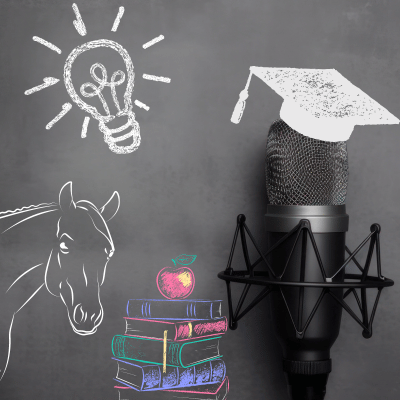We can't fit the entire discussion into this article, so we've selected two of our favourite moments. First, we dive into how relaxation is crucial for building trust with your horse, and then we offer you a practical exercise from Zoe to kickstart your True Liberty journey.
Why is Relaxation Critical to Trust?
Zoe highlights the importance of relaxation as the gateway to meaningful horse-human interactions. “An unrelaxed horse cannot learn,” she says, mirroring the human learning experience. An anxious or tense state is hardly conducive to learning for any species. Although specific studies are limited, it's widely theorised that a relaxed state is conducive to optimal brain function. This condition likely promotes the activation of neural pathways crucial for learning and memory, making it easier for the horse to understand and remember new cues or skills.
The 'Relaxation Buttons'
Communication is vital in any relationship, including the one with your horse. Zoe advises identifying specific ‘relaxation buttons’ or calming techniques, such as slight pressure on particular muscles or gentle strokes. Vocal assurances, she warns, can sometimes backfire, given that a shaky voice can make a horse anxious. Find your horse's ‘relaxation button’. Your horse is unique, and observing your horse's individual responses is crucial to effectively identify and utilise these calming techniques.
Lowering the Neck - More Than Just a Trick
In horse training, you'll often hear the phrase, “the devil's in the details.” One detail that Zoe Coade emphasises is teaching your horse to lower its neck. Before you think this is just some fancy trick to make your horse look submissive or gentle for a photo op, think again. Zoe argues that it is, in fact, a critical component in building a trusting and meaningful relationship with your equine partner.
The Science Behind Lowering the Neck
Zoe delves deep into the science during our podcast in the segment “The role of the brachiocephalic muscle” [00:52:04]. For those unfamiliar with equine anatomy, the brachiocephalic muscle runs along the horse's neck and some refer to it as the ‘fight or flight’ muscle. When this muscle is tense, it generally indicates that the horse is in a heightened state of alertness, possibly due to stress, fear, or excitement. The opposite is also true; a relaxed brachiocephalic muscle can be a reliable indicator that your horse is calm and receptive.
Why This Matters for Building Trust
Why is this so crucial for building trust? When a horse allows you to guide its movements in such a way that results in the relaxation of this crucial muscle, it signifies a level of trust and comfort with you. Zoe points out that this is no small feat. Achieving this kind of muscle relaxation requires understanding your horse's body language, their stress triggers, and how to communicate with them effectively. This principle aligns closely with traditional Western training methods. Relaxation is the basis for trust, and trust makes room for effective, meaningful training. Zoe stresses the need for patient, relaxed communication to nurture this bond over time.
An Excercise to Start Your True Liberty Journey
So you’re hooked. Want to take your first steps into True Liberty? Zoe recommends a simple exercise that stresses the importance of partnership and leadership.
The 'Walk Beside Me' Excercise
Positioning: Stand beside your horse, keeping the hand closest to the horse free. The hand farthest from the horse should hold a stick and excess rope.
Forward Signals: Apply pressure towards the middle or back of the horse to encourage forward motion, understanding that this action may pull the horse's nose slightly towards you.
Stick and Body Language: Use your stick to signal cues to the horse. If your horse is pushy, keep the stick closer to him, offering cues towards the shoulder or nose as needed.
Stick Switching: As your horse understands the desired walking position, switch the stick to the outside. This invites the horse into your space, encouraging them to walk beside you willingly.
Master the Walk: This lays the groundwork for future advanced movements, like trotting or cantering, always built on a foundation of trust and relaxation.
This exercise, simple as it may seem, is a significant first step in your True Liberty journey, fundamentally changing how your horse perceives you.
A Lasting Impact
If you're as intrigued as we were by Zoe's insights, catch our full podcast episode for a deep dive into True Liberty training, equine welfare, and much more. Trust us, it's an enlightening listen and a cornerstone for anyone serious about the equestrian journey.
- Explore her courses and journey at Get Good With Horses Courses: https://rebrand.ly/GetGood
- Engage with her vibrant community on Facebook: https://rebrand.ly/FB-GetGood
- Get a visual treat of her horsemanship adventures on Instagram: https://rebrand.ly/Insta-GetGood


.jpg)


.png)